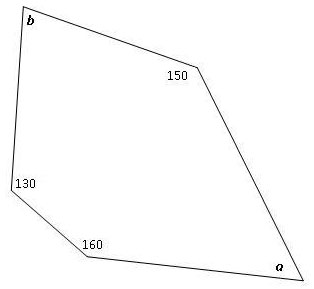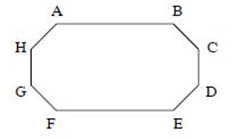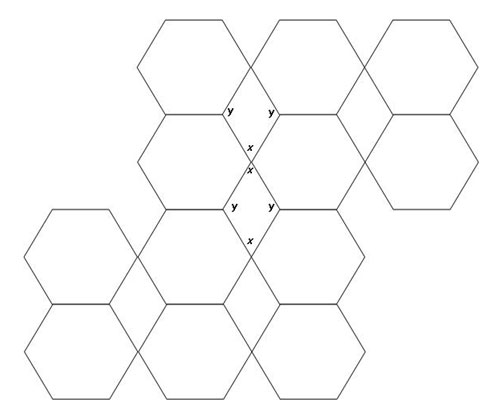
Using the polygons shown below, what can you conclude about the sum of the interior angles of any polygon?

A. The sum of the interior angles is always 180 degrees.
Incorrect. To find the sum of the interior angles, multiply the number of triangles by 180.
B. The sum of the interior angles in a polygon is always 360 degrees.
Incorrect. The sum of the exterior angles of any polygon is 360 degrees. To find the sum of the interior angles, multiply the number of triangles by 180.
C. The sum of the interior angles in any polygon can be found by multiplying the number of triangles formed by the diagonals from one vertex times 180 degrees in each triangle.
Correct! The sum of the angles in each triangle is 180 degrees. Multiplying the number of triangles by 180 should give you the sum of the exterior angles in any polygon.
D. The sum of the interior angles in a polygon can be found by multiplying the number of sides times 180 degrees.
Incorrect. The number of triangles formed by the diagonals from one vertex is always 2 less than the number of sides. To find the sum of the interior angles, multiply the number of triangles by 180.
Which of these methods could be used to find the sum of the interior angles of the polygon below?

A. Multiply 8, the number of sides, by 180
Incorrect. The number of triangles formed by the diagonals from one vertex is always 2 less than the number of sides, 8, in the polygon. In this case 6 triangles are formed by the diagonals from one vertex, so you would have to multiply 6 by 180.
B. Multiply 6 by 180
Correct! The number of triangles formed by the diagonals from one vertex is always 2 less than the number of sides in the polygon. There are 8 sides and 6 triangles formed by the diagonals from one vertex, so you would have to multiply 6 by 180.
C. Divide 6 by 180
Incorrect. Multiply, not divide, 6 by 180.
D. Divide 360 by 8
Incorrect. This would be used to find each exterior angle of a regular octagon. To find the sum of the interior angles, multiply the number of triangles formed by the diagonals from one vertex (2 less than the number of sides - 8 sides and 6 triangles formed) by 180.

In the diagram below, find the sum of measures ∠a and ∠ b.

A. 100°
Correct! The sum of the angles in a pentagon is (n − 2)180 or 540°. The sum of the missing angles is 540 − (130 + 160 + 150) or 100°.
B. 240°
Incorrect. The sum of the angles in a pentagon is (n − 2)180 or 540°. The sum of the missing angles is 540 − (130 + 160 + 150) or 100°.
C. 146.67°
Incorrect. The sum of the angles in a pentagon is (n − 2)180 or 540°. The sum of the missing angles is 540 − (130 + 160 + 150) or 100°.
D. 140°
Incorrect. The sum of the angles in a pentagon is (n − 2)180 or 540°. The sum of the missing angles is 540 − (130 + 160 + 150) or 100°.